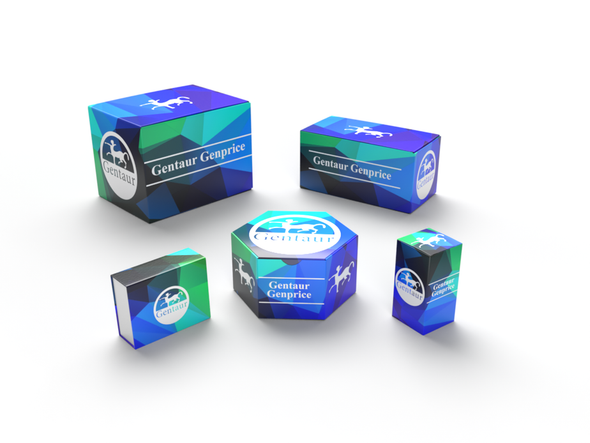Description
C-raf Antibody | 5779 | Gentaur UK, US & Europe Distribution
Host: Chicken
Reactivity: Human, Mouse, Rat
Homology: Predicted species reactivity based on immunogen sequence: Bovine: (100%) , Chicken: (84%)
Immunogen: C-raf antibody was raised against an 19 amino acid synthetic peptide near the amino terminus of human C-raf.
The immunogen is located within amino acids 30 - 80 of C-raf.
Research Area: Cancer, Cell Cycle
Tested Application: E, WB
Application: C-raf antibody can be used for detection of C-raf by Western blot at 0.5 - 1 μg/mL.
Antibody validated: Western Blot in human samples. All other applications and species not yet tested.
Specificiy: N/A
Positive Control 1: Cat. No. 1202 - A431 Cell Lysate
Positive Control 2: N/A
Positive Control 3: N/A
Positive Control 4: N/A
Positive Control 5: N/A
Positive Control 6: N/A
Molecular Weight: Predicted: 72 kDa
Observed: 72 kDa
Validation: N/A
Isoform: N/A
Purification: C-raf Antibody is affinity chromatography purified via peptide column.
Clonality: Polyclonal
Clone: N/A
Isotype: IgY
Conjugate: Unconjugated
Physical State: Liquid
Buffer: C-raf Antibody is supplied in PBS containing 0.02% sodium azide.
Concentration: 1 mg/mL
Storage Condition: C-raf antibody can be stored at 4˚C for three months and -20˚C, stable for up to one year. As with all antibodies care should be taken to avoid repeated freeze thaw cycles. Antibodies should not be exposed to prolonged high temperatures.
Alternate Name: C-raf Antibody: NS5, CRAF, Raf-1, c-Raf, RAF, Proto-oncogene c-RAF, cRaf
User Note: Optimal dilutions for each application to be determined by the researcher.
BACKGROUND: C-raf Antibody: C-raf is the cellular homolog of viral raf gene (v-raf) and encodes a MAP kinase kinase kinase (MAP3K) , which functions downstream of the Ras family of membrane associated GTPases. Once activated, C-raf phosphorylates and activates the protein kinases MEK1 and MEK2, which in turn phosphorylate and activate the serine/threonine specific protein kinases, ERK1 and ERK2. These activated ERKs are pleiotropic effectors of cell physiology and play an important role in the control of gene expression involved in the cell division cycle, apoptosis, cell differentiation and cell migration. Mutations in this gene are associated with Noonan syndrome 5 and LEOPARD syndrome 2.






